Indoor plants, with their lush greenery, can bring life to any space, but when they start wilting or drooping, it can be a cause for concern. Wilting, a physiological condition, is characterized by the limp, lifeless, and sagging appearance of a plant, rather than its usual firm and vibrant state. This condition is primarily caused by a lack of sufficient water for transpiration, which can occur due to underwatering, overwatering, or damage to the plant’s roots.
On the other hand, drooping is a broader term that refers to the downward bending of a plant’s parts. While wilting is a type of drooping, not all drooping is due to wilting. Plants might droop due to a variety of reasons such as lack of light, over-fertilization, or temperature stress.
According to a study published in the Journal of Plant Physiology, both wilting and drooping are common responses of plants to stress, and they serve as vital indicators of the plant’s health. This article aims to provide a comprehensive guide on how to save a wilting or drooping indoor plant. It will explore the various causes of these conditions, discuss potential solutions, and provide practical tips to prevent these issues in the future. The goal is to equip you with the knowledge to ensure the health and longevity of your indoor plants.
What are the common symptoms of a wilting or drooping indoor plant?
Before we dive into the solutions, let’s first understand the signs that your plant is in distress.
Physical Signs
- Discoloration: Leaves may turn yellow or brown.
- Drooping: Plant appears wilted, leaves are falling over.
- Wilting: Leaves feel soft and bend easily.
Growth Signs
- Slow growth: The plant is not growing at its usual pace.
- Brown leaf tips: The ends of leaves may turn brown.
Understanding these symptoms is the first step to identifying the problem and taking appropriate action.
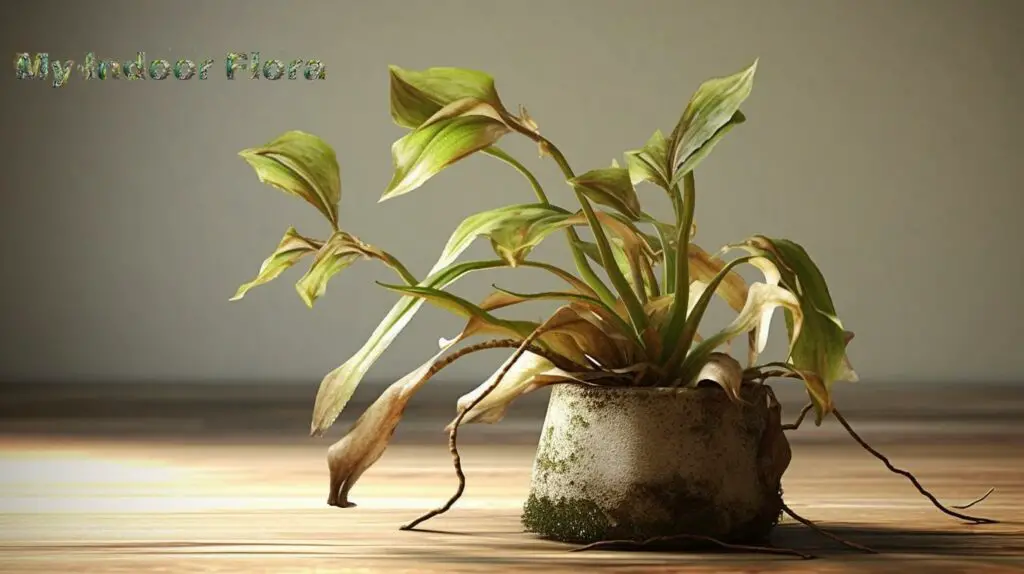
Why is My Indoor Plant Wilting or Drooping?
Wilting or drooping is a common symptom of stress in indoor plants. It can be caused by a variety of factors, including overwatering, underwatering, inadequate light, temperature fluctuations, and pest infestations. Understanding these causes is the first step towards reviving your plant.
Is Your Indoor Plant Getting the Right Amount of Water?
Watering is a critical aspect of plant care, and both overwatering and underwatering can lead to wilting. Overwatering can cause root rot, a condition where the roots of the plant become waterlogged and oxygen-starved, leading to their decay. On the other hand, underwatering can cause the plant to dehydrate and wilt.
According to a study published in the Journal of Experimental Botany, overwatering is one of the most common causes of indoor plant death. The study suggests that the majority of indoor plants prefer their soil to dry out completely between watering sessions. This is because most indoor plants are adapted to environments where water is a limited resource, and their roots are designed to extract as much water as possible from dry soil. Overwatering can overwhelm these adaptations and lead to root rot, which manifests as wilting due to the plant’s inability to take up water and nutrients.
Conversely, underwatering can also cause wilting as the plant does not receive enough water to maintain its cell structure. When a plant is underwatered, its cells lose turgor pressure, a force that is applied onto the cell wall by water within the cell. This loss of turgor pressure results in the wilting of the plant.
How Does Light Affect Your Indoor Plant’s Health?
Light is another crucial factor for plant health. All plants need light to photosynthesize and produce food. However, different plants have different light requirements. Some plants thrive in bright, direct light, while others prefer indirect or filtered light.
A study in the Journal of Plant Physiology found that plants exposed to inadequate light can experience reduced photosynthesis, leading to slower growth and wilting. This is because photosynthesis, the process by which plants convert light energy into chemical energy, is directly influenced by the intensity and quality of light. Inadequate light can limit the plant’s ability to produce the energy it needs to maintain its cellular functions, leading to wilting.
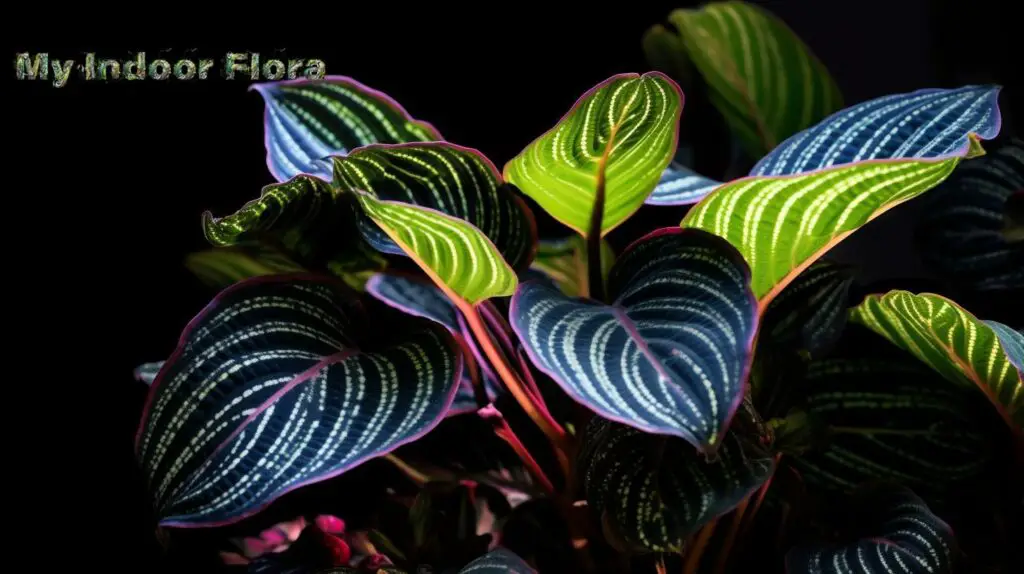
Can Temperature and Humidity Affect Your Indoor Plant’s Health?
Temperature and humidity play significant roles in plant health. Most indoor plants prefer temperatures between 60-75°F (15-24°C) and a humidity level of 40-60%. Fluctuations outside these ranges can cause stress, leading to wilting.
A study in the American Journal of Botany found that plants exposed to temperatures outside their optimal range can experience reduced growth and wilting. This is because temperature affects the rate of most biochemical reactions within the plant, including photosynthesis and respiration. Extreme temperatures can disrupt these processes, leading to a decline in plant health.
Similarly, low humidity can cause plants to lose water faster than they canabsorb it, leading to dehydration and wilting. A study in the journal Plant, Cell & Environment found that low humidity levels can increase the rate of transpiration, the process by which water is lost from the plant to the atmosphere. This can lead to a water deficit within the plant, causing wilting.
Are Diseases or Pests Affecting Your Indoor Plant?
Diseases and pests can also cause wilting in indoor plants. Common diseases include root rot, leaf spot diseases, and fungal infections. Pests such as spider mites, aphids, and mealybugs can also cause significant damage.
According to a report in the Annual Review of Phytopathology, diseases and pests can cause wilting by damaging the plant’s tissues, disrupting its water transport system, or by introducing toxins. For example, root rot fungi can damage the roots, impairing their ability to absorb water and nutrients. Similarly, pests can damage leaves and stems, disrupting the plant’s water transport system and leading to wilting.
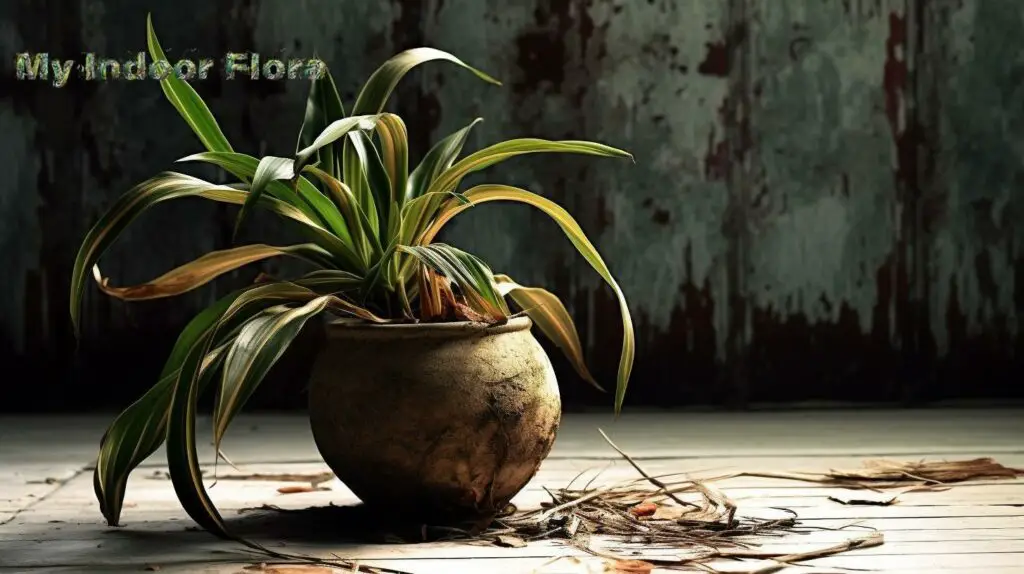
Nutrient Deficiency and Wilting or Drooping
Just as humans need a balanced diet to stay healthy, plants also require certain nutrients to grow properly and maintain their health. A deficiency in any of these essential nutrients can lead to various symptoms, including wilting or drooping.
When plants lack essential nutrients, they are unable to perform vital functions, such as photosynthesis, growth, and resistance to pests and diseases. This can result in a variety of symptoms, including yellowing leaves, stunted growth, and in severe cases, wilting or drooping.
Plants require several nutrients to thrive. These include macronutrients, such as nitrogen (N), phosphorus (P), and potassium (K), which are needed in large amounts. They also need micronutrients, like iron (Fe), manganese (Mn), and zinc (Zn), albeit in smaller quantities. A deficiency in any of these nutrients can lead to health problems in plants.
How Can Nutrient Deficiency Lead to Wilting or Drooping?
A nutrient deficiency can weaken a plant, making it less able to support its own weight, leading to wilting or drooping. For example, a lack of potassium can result in weak stems and wilting. Similarly, a deficiency in nitrogen, which is essential for growth, can lead to stunted growth and wilting.
How Can You Identify and Address Nutrient Deficiencies?
Identifying nutrient deficiencies can be challenging, as different deficiencies can present similar symptoms. However, a common sign of nutrient deficiency is yellowing leaves. If you notice this or any other unusual symptoms, it’s important to investigate further.
Addressing nutrient deficiencies involves amending the soil with the missing nutrients. This can be done through the application of a balanced fertilizer or specific nutrient supplements, depending on the deficiency. Regular soil testing can help prevent nutrient deficiencies by allowing you to maintain optimal soil conditions.
What is the Impact of Overfertilization?
While it’s important to ensure plants receive all the nutrients they need, overfertilization can be just as harmful as a deficiency. Excess nutrients can lead to salt buildup in the soil, which can cause leaf burn, wilting, and even plant death. Therefore, it’s crucial to apply fertilizers judiciously and according to package instructions.
How can I conduct a thorough health check of my wilting indoor plant?
Now that we’ve understood the symptoms and potential causes, it’s time to put on your detective hat and carry out a thorough plant health check.
Checking the Roots
Healthy roots are the foundation of a healthy plant. Gently remove your plant from its pot and check the roots. If they are soft, brown, and mushy, overwatering may be the problem. Conversely, if the roots are brittle and dry, your plant could be underwatered.
Checking the Leaves
Examine the leaves of your plant. Discoloration, spots, or browning can give you clues about the problem.
Checking the Soil
The soil can provide important insights into your plant’s health. If it’s waterlogged, overwatering could be the issue. On the other hand, if the soil is dry and cracks easily, your plant might be thirsty.
How do I address overwatering in my indoor plant?
Overwatering can cause serious damage to your plant’s roots and overall health. Let’s understand how to tackle this problem.
Overwatering often leads to waterlogged soil and yellow leaves. If you notice these signs, you may need to adjust your watering routine.
A good rule of thumb is to water your plant only when the top inch of soil is dry.
Adequate drainage is key to prevent overwatering. Ensure your plant pot has enough drainage holes to allow excess water to escape.
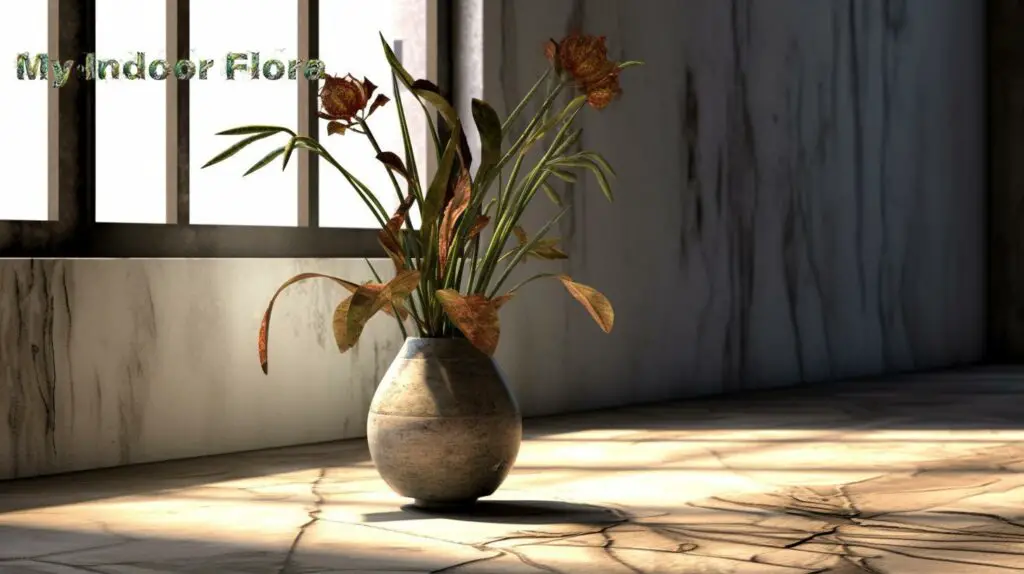
How can I fix under watering issues in my drooping indoor plant?
Just as too much water can harm your plant, too little water can also cause problems.
If your plant’s leaves are wilting or curling and the soil is dry, your plant may be underwatered.
Plants have different watering needs depending on their species and the environmental conditions. Learn about your plant’s specific needs and adjust your watering schedule accordingly.
For most indoor plants, watering from the bottom is a great way to ensure the roots get adequate water. This can be achieved by placing the plant pot in a tray of water and letting the plant absorb water through the drainage holes.
How can I optimize the light conditions for my wilting indoor plant?
Light plays a vital role in plant health, but how can we ensure our plant is getting the right amount of light?
Different plants have different light requirements. Some plants thrive in bright, direct light while others prefer indirect or low light. Do your research and understand what kind of light your specific plant needs.
Once you know your plant’s light requirements, you can adjust its placement accordingly.
In situations where natural light is insufficient, artificial grow lights can be a great alternative to support your plant’s growth.
How can I regulate the temperature for my drooping indoor plant?
Temperature is another important factor that can influence your plant’s health. Let’s learn how to manage it.
Every plant species has a preferred temperature range. Research your plant’s ideal temperatures and try to maintain these conditions in your home.
Keep your plant away from sources of extreme heat or cold, like radiators or air conditioning vents.
Avoid placing your plant in areas with large temperature fluctuations.
How do I rectify nutrient deficiency in my indoor plant?
Nutrient deficiency can lead to a range of plant health issues, including wilting and drooping.
Common signs of nutrient deficiency include discolored leaves, stunted growth, and leaf drop.
Different plants have different nutrient needs. It’s important to understand what nutrients your plant needs to thrive.
Choose a fertilizer that provides the right balance of nutrients for your specific plant.
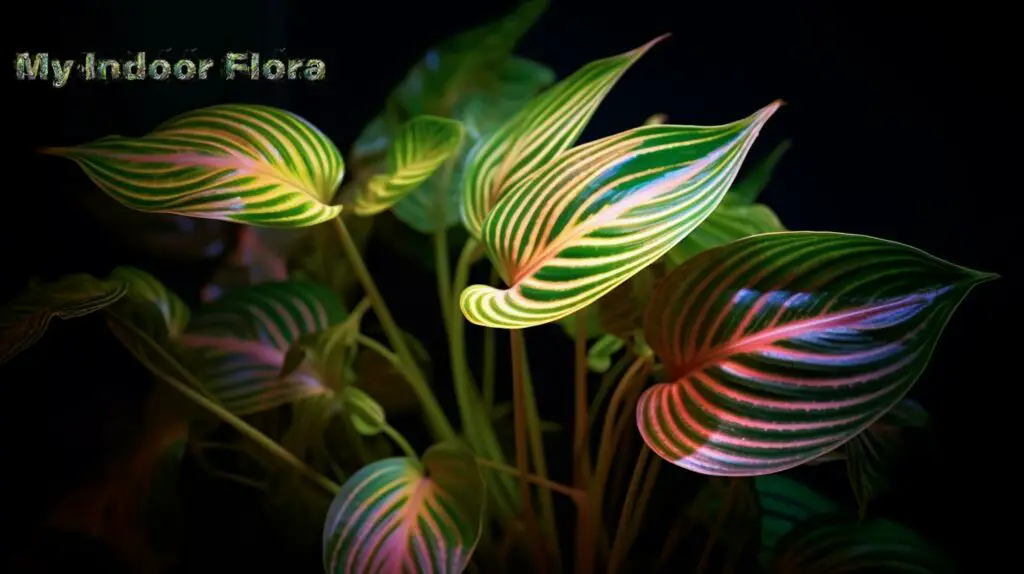
How to Revive a Wilting or Drooping Indoor Plant?
Reviving a wilting or drooping indoor plant involves identifying the cause of the problem and taking appropriate corrective measures. This may involve adjusting your watering schedule, changing the plant’s location, or treating diseases and pests.
1. Adjust Your Watering Schedule
If overwatering or underwatering is the cause of wilting, adjusting your watering schedule can help. If you’re overwatering, allow the soil to dry out completely before watering again. If you’re underwatering, increase your watering frequency, but make sure not to waterlog the soil.
A study in the journal HortScience found that adjusting watering schedules based on the plant’s needs can significantly improve plant health. The study suggests using the “finger test” to determine when to water: simply stick your finger into the soil up to the second knuckle. If the soil at your fingertip feels dry, it’s time to water.
2. Adjust Light Conditions
If inadequate light is causing your plant to wilt, try moving it to a brighter location. However, avoid placing it directly under harsh sunlight as it can cause leaf burn. Conversely, if your plant is getting too much light, move it to a location with more indirect or filtered light.
3. Modify Indoor Climate Conditions
If temperature fluctuations or low humidity are causing your plant to wilt, try to stabilize the indoor climate. You can increase humidity by placing a tray of water near your plant, misting your plant, or using a humidifier.
4. Handle Diseases and Pests
If your plant is affected by a disease or pest, identify the specific problem and treat it accordingly. For example, fungal diseases can often be treated with a fungicide, while pests can be managed with insecticidal soap or neem oil.
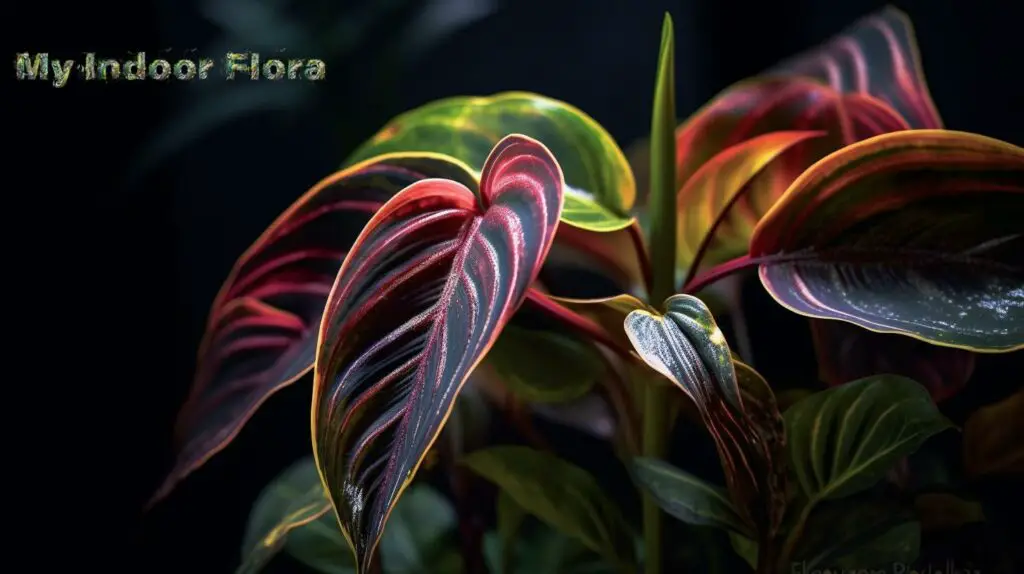
When Should You Consider Repotting a Wilting Indoor Plant?
Repotting a wilting indoor plant can sometimes be the solution to its problems. However, it’s crucial to understand when and why repotting might be necessary.
There are several reasons why a wilting indoor plant might benefit from being repotted:
- Root Bound: If the plant’s roots have filled the pot to the point where they’re growing in circles or poking out of the drainage holes, the plant is root-bound. This can restrict the plant’s growth and lead to wilting.
- Poor Drainage: Over time, potting soil can become compacted, reducing its ability to drain properly. This can lead to waterlogged soil and root rot, which can cause wilting.
- Nutrient Deficiency: If the plant has used up all the nutrients in its current potting mix, it may start to wilt. Repotting with fresh soil can give it the nutrients it needs.
How to Repot a Wilting Indoor Plant
Repotting should be done carefully to avoid causing further stress to the plant. Here are the steps to follow:
- Choose the Right Pot: The new pot should be slightly larger than the current one, with good drainage holes.
- Prepare the New Pot: Place a layer of fresh potting mix in the bottom of the new pot.
- Remove the Plant from Its Current Pot: Carefully remove the plant from its current pot. If it’s stuck, you may need to tap the sides of the pot to loosen it.
- Inspect and Prune the Roots: Inspect the roots for any signs of disease or pests. If the plant is root-bound, gently tease apart the roots. Prune away any dead or damaged roots.
- Place the Plant in the New Pot: Position the plant in the new pot, making sure it’s sitting at the same depth as it was in the old pot. Fill around the plant with fresh potting mix, pressing it down lightly to remove any air pockets.
- Water Thoroughly: After repotting, water the plant thoroughly, allowing excess water to drain away.
Aftercare for a Repotted Plant
After repotting, the plant may need some extra care. Keep it out of direct sunlight for a few days to allow it to recover, and monitor its water needs closely. It’s normal for the plant to show signs of stress after being repotted, such as wilting or leaf drop, but it should recover with proper care.
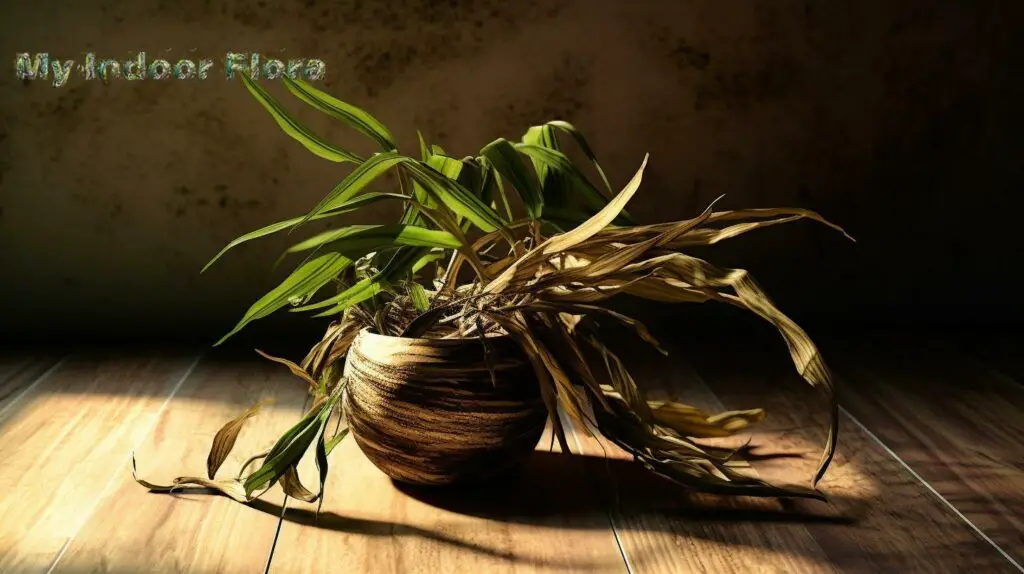
How Can I Prevent My Indoor Plant from Wilting or Drooping in the Future?
Preventing wilting or drooping in indoor plants involves a comprehensive understanding of the plant’s needs and providing a conducive environment for its growth. Here are some key strategies to ensure your indoor plant stays healthy and vibrant:
Understand Your Plant’s Specific Needs
Every plant species has unique requirements for light, water, temperature, and humidity. Research your specific plant type to understand its needs. Some plants thrive in bright, indirect light, while others prefer lower light conditions. Similarly, some plants prefer to dry out between waterings, while others prefer consistently moist soil.
Provide Adequate Lighting
Ensure your plant is getting the right amount of light. Too little light can lead to weak, leggy growth, while too much light can scorch the leaves. If natural light is insufficient, consider using a grow light.
Water Properly
Overwatering is a common cause of wilting in indoor plants. Always check the moisture level of the soil before watering. Most indoor plants prefer the top inch of soil to dry out between waterings. When you water, do so thoroughly, ensuring water drains out of the bottom of the pot.
Monitor Temperature and Humidity
Most indoor plants prefer temperatures between 60-75°F (15-24°C) and humidity levels of 40-60%. Avoid placing plants near drafts, heating vents, or air conditioners, which can cause temperature fluctuations.
Feed Your Plant
Plants need nutrients to grow. Use a balanced, water-soluble fertilizer and follow the package instructions for how much and how often to feed. Most indoor plants benefit from feeding in the spring and summer when they’re actively growing.
Regularly Check for Pests and Disease
Regularly inspect your plant for signs of pests or disease, which can cause wilting. Common indoor plant pests include spider mites, aphids, and scale. If you spot pests, treat promptly with an appropriate pesticide or natural remedy.
Rotate Your Plant
Rotating your plant every few weeks can ensure it gets even light exposure, promoting balanced growth.
Repot When Necessary
If your plant becomes root-bound or the soil is depleted of nutrients, it may be time to repot. Choose a pot that’s one size larger than the current one and use a high-quality potting mix.
By following these strategies, you can help prevent your indoor plant from wilting or drooping and ensure it stays healthy and vibrant. Remember, the key to successful plant care is consistency and attentiveness to your plant’s needs.
